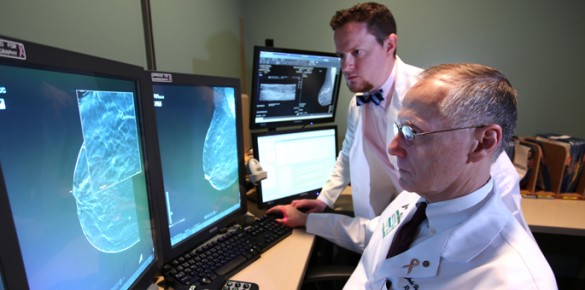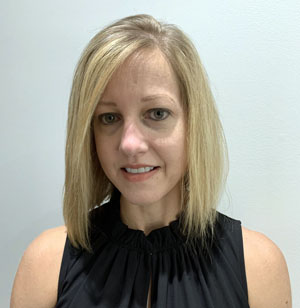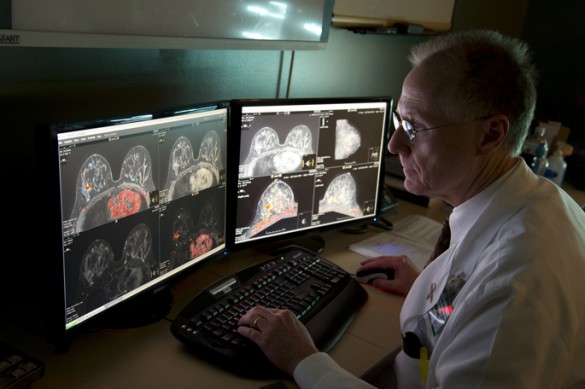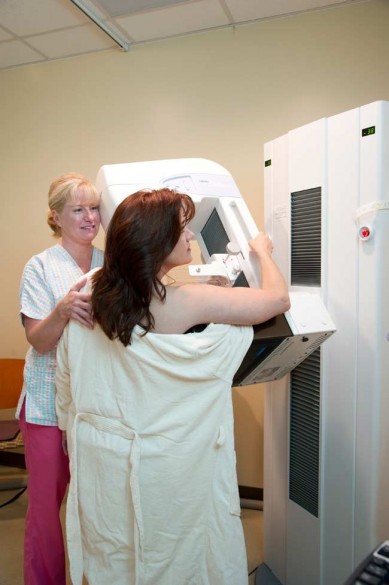
The Vanderbilt Breast Center at Vanderbilt Health One Hundred Oaks has added tomosynthesis mammography, an imaging technique that creates a three-dimensional image of breast tissue, to help screen patients for breast cancer.
While a standard mammogram machine takes a static picture from above the breast, the tomosynthesis tube moves over the breast in an arc.
“This allows the machine to take 20 projection images, and each of those 20 low-dose images is taken at a slightly different position along that arc. All of that information is fed into the computer and the computer reconstructs these thin slices,” said John Huff, M.D., chief of the Section of Breast Imaging and Imaging Director of the Vanderbilt Breast Clinic.
“Just as in CT, that ability to see things without overlapping structures gives us more clarity in our images. So it’s fundamentally like a mammogram except for this ability to reconstruct the images in three dimensions that really distinguishes it from a mammogram.”
Vanderbilt officials decided to add the tomosynthesis technology to help prepare for a new Tennessee law that went into effect Jan. 1 that states women who are identified as having dense breasts must receive a letter notifying them about their breast density and recommending that they confer with their physician about the possibility of additional screening. Women with dense breasts have a slightly increased risk of developing breast cancer.
“We are very excited to offer this innovative imaging service to women within the collaborative setting of the Vanderbilt Breast Center,” said Reed Omary, M.D., M.S., Carol D. and Henry P. Pendergrass Professor of Radiology and Radiological Sciences and chair of the department. “Providing the most advanced care for women, including those notified of increased breast density, is our top priority.”
The new tomosynthesis screening is performed in addition to standard mammography and is not a standalone test. The radiation dose from tomosynthesis is similar to the amount of radiation from a couple of additional mammogram images.
With the addition of 3-D imaging, the Vanderbilt Breast Center now offers three forms of enhanced imaging, including ultrasound and MRI scans.
“With tomosynthesis, we can get the same degree of sensitivity that we can get with screening breast ultrasound but it is much more specific,” said Huff. “With screening breast ultrasound, up to 90 percent of the anomalies are false positive findings. Tomosynthesis is more like mammography in that we have a much higher specificity and a much lower level of false positives.”
MRI is the most sensitive test for supplemental screening and it is still the test that Vanderbilt breast experts recommend in women who are at high risk for breast cancer. Tomosynthesis could be useful for women who are at intermediate risk, including those who may have dense breasts but who have no other additional risk factors.
The 3-D tomosynthesis has been approved by the U.S. Food and Drug Administration (FDA) and is the least expensive of the three supplemental screening technologies. However, most third-party insurance companies are not reimbursing for the tests at this time.
Unlike standard screening mammograms which patients can receive on a walk-in basis, to receive tomosynthesis screening patients must have an order from their physician.
For more information about breast screenings, contact the Vanderbilt Breast Center at 322-2064.















